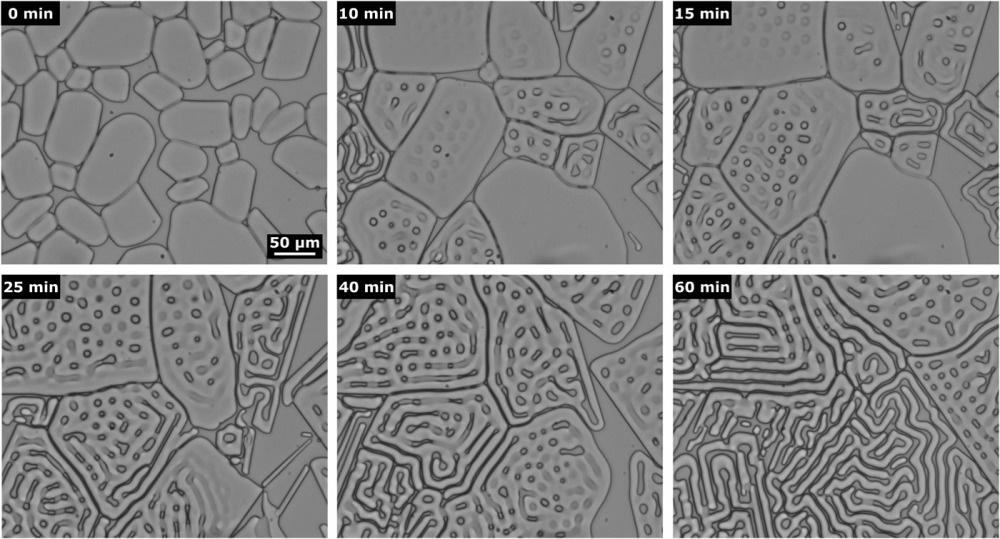31 March, 2019
Ice absorbs near-infrared light more efficiently than does water, triggering the formation of intricate patterns.
A maze-like pattern develops in an ice-water mixture that soaks up near-infrared light for 60 minutes. Credit: S. G. Preis et al./Sci. Adv.
Water molecules can form a variety of intricate patterns. The molecules self-organize into snowflakes, for example, and laser beams can bore microscopic channels into ice cubes. Now, Ido Braslavsky at the Hebrew University of Jerusalem in Rehovot, Israel, and his colleagues have demonstrated that simply shining light on a partially frozen water sample can create complex structures.



